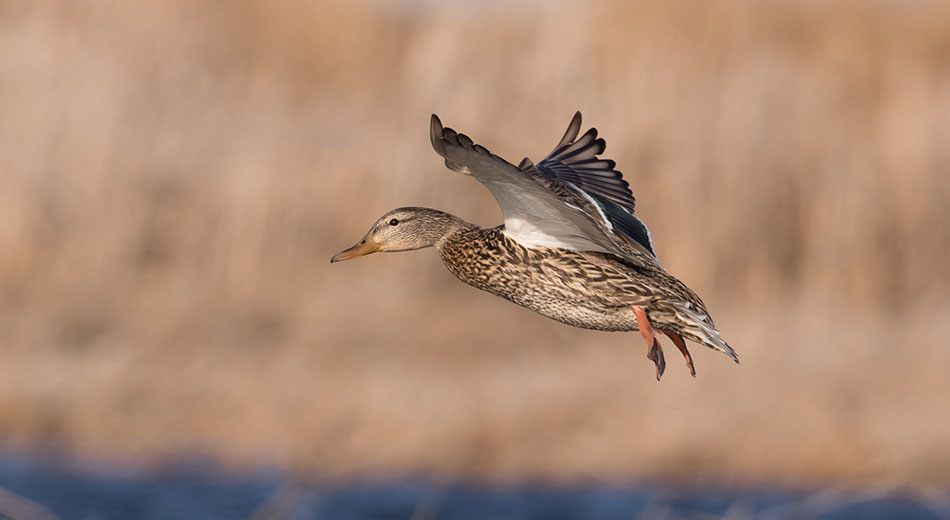
A High-Mileage Mallard
Alabama to the Arctic: Geolocator reveals hen’s wild journey north
 Captured near Delta Beach, Manitoba, in August 2023, a hen mallard has wowed researchers with one of the most extensive migrations ever recorded for the species using a geolocator. Recovered in Arkansas by hunter Tyler Bartlett in January 2025, the duck traversed thousands of miles of the United States and Canada during the 533 days that its geolocator—a small, leg-mounted tracking device-collected data.
Captured near Delta Beach, Manitoba, in August 2023, a hen mallard has wowed researchers with one of the most extensive migrations ever recorded for the species using a geolocator. Recovered in Arkansas by hunter Tyler Bartlett in January 2025, the duck traversed thousands of miles of the United States and Canada during the 533 days that its geolocator—a small, leg-mounted tracking device-collected data.
After departing Manitoba in fall 2023, the bird flew to the Gulf Coast, wintering near the Mississippi-Alabama border. But it was her spring 2024 migration that truly raised eyebrows. Rather than stopping in the prairie pothole region or even Canada's boreal forest like most mallards, she rocketed north through the eastern Northwest Territories to the remote Beaufort Sea off the coast of Nunavut.
"It's one of the biggest movements from a mallard’s geolocator I’ve seen in my career,” said Dr. Chris Nicolai, Delta’s waterfowl scientist and a renowned expert in duck tracking and population monitoring. "The hen used areas way north for a dabbling duck, in a region where you'd expect to find Arctic-nesting tundra swans and lesser snow geese."
The geolocator data was collected as part of a research project led by Delta's Nicolai; graduate student Kelsie Huss, Dr.Karen Machin, and Dr. Mitch Weegman of the University of Saskatchewan; Paul Link from the Louisiana Department of Wildlife and Fisheries; and Dr. Matt Dyson from Ducks Unlimited-Canada.
The study is assessing whether different styles of attaching radios to ducks—such as backpacks, implants, and geolocators—are less impactful to duck behavior and survival than others. While geolocators lack the precision of more advanced GPS units, they're also far less expensive and known to reveal some extraordinary tales while advancing waterfowl science. —Kyle Wintersteen
